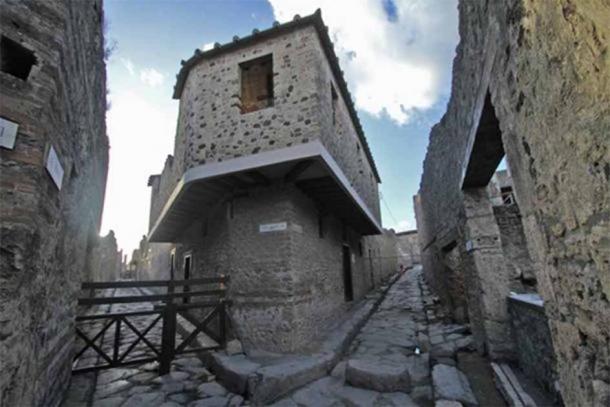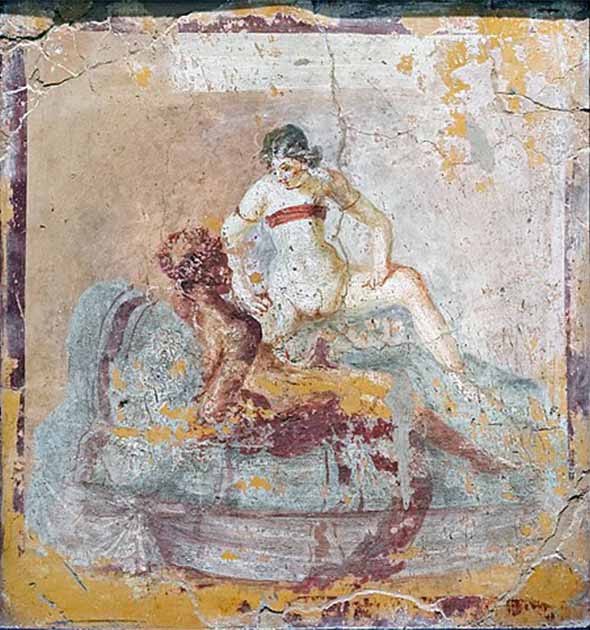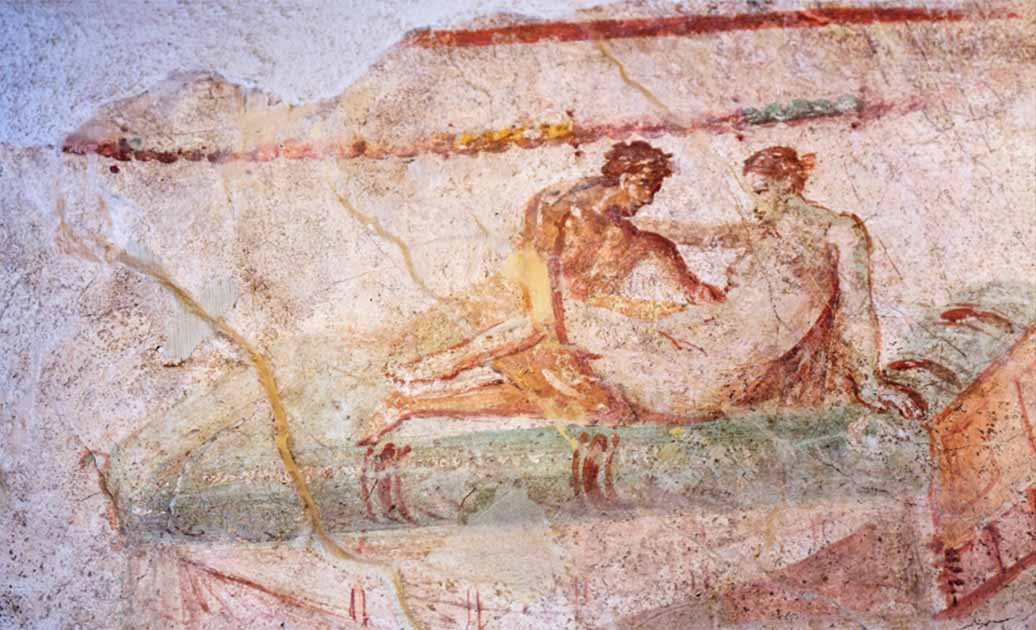Roman Brothels, the Controversial Ancient Societal Hubs
Ancient Rome had a very vibrant and complex society, where prostitution played a major role. It was legal, licensed, and very common. In fact, brothels occupied a unique and controversial position in Rome’s society. These establishments, known as " lupanaria," were integral parts of Roman urban life, catering to the varied desires of citizens, soldiers, and travelers alike. Operating under the watchful gaze of both moral condemnation and societal acceptance, brothels in Ancient Rome were hubs of both pleasure and commerce, offering a glimpse into the complexities of Roman attitudes towards sexuality, class, and power.
- Spintriae, The Roman Sex Coins That Showed What Was on The Menu
- The Fallen Women: Were Victorian Prostitutes Really Fallen?
Roman Brothels Were an Integral Part of Society
Brothels in Ancient Rome were not clandestine, taboo operations hidden away in dark alleys but were often prominent and praised establishments, strategically located in bustling city centers. These lupanaria were easily recognizable by their distinctive signage and were frequented by individuals from all walks of life. The Roman poet Martial described them as "open to all the winds," emphasizing their accessibility and lack of discrimination. Walking the streets of any big Roman town, you could not miss a brothel. Large phalluses were engraved on the pavement, leading pedestrians towards a brothel.
- Lost in Translation? Understandings and Misunderstandings about the Ancient Practice of “Sacred Prostitution”
- Exposing the Secret Sex Lives of Famous Greeks and Romans in the Ancient World

Phallic shaped carving on the road in Pompeii, Italy pointing the way to the brothel. (Isabel/Adobe Stock)
One of the most notable aspects of Roman brothels was their legal status. While prostitution itself was not illegal in Ancient Rome, regulations and restrictions governed the operation of brothels. Brothel owners, known as "lenones," were required to register their establishments with the authorities and comply with certain regulations, such as maintaining hygiene standards and paying taxes. This legal framework provided a degree of protection for both the workers and patrons of these establishments, although it also subjected them to scrutiny and surveillance by the authorities.

The Lupanare Roman brothel in Pompeii. (General Cucombre / CC BY 2.0)
A Necessity for Many Romans
The clientele of Roman brothels was very diverse, reflecting the cosmopolitan nature of the city. From wealthy aristocrats to common laborers, people from all social classes could be found seeking the services of prostitutes. For many Romans, visiting a brothel was considered a normal and even essential part of urban life. The availability of sexual services provided an outlet for both physical desires and social interactions, fostering a sense of community within these establishments.
Within the walls of a Roman brothel, a complex ecosystem thrived, governed by its own set of rules and hierarchies. Prostitutes, known as "meretrices," occupied a central role in this hierarchy, with experienced and skilled individuals commanding higher fees and prestige. These women came from diverse backgrounds, ranging from slaves and freedwomen to independent entrepreneurs. Despite the social stigma attached to their profession, some prostitutes were able to amass significant wealth and influence, challenging traditional notions of gender and class. Many, however, lived poor and abused lives, and were often at the mercy of the pimps who took most of their earnings.
The daily operations of a Roman brothel were meticulously organized, with lenones overseeing the management of the establishment and ensuring the smooth functioning of its services. Prostitutes were often divided into categories based on age, appearance, and specialization, allowing patrons to choose according to their preferences. Rooms within the brothel were furnished for comfort and privacy, providing a discreet environment for transactions to take place. Erotic frescoes adorned the walls of the brothels, displaying sexual intercourse in many diverse positions, and inspiring the patrons.

Erotic scene on a Roman fresco, Pompeii. (Public Domain)
Beyond mere transactions, Roman brothels also served as spaces for socializing and entertainment. Many establishments offered amenities such as food, drink, and music, creating a convivial atmosphere for patrons to enjoy. And besides the erotic art and decoration that adorned the walls, many graffities were inscribed as well, further enhancing the sensory experience for visitors, often serving as “reviews” of the brothel’s quality. In some cases, brothels even hosted performances and spectacles, blurring the lines between commerce and entertainment.

Graffiti inside the Lupanare. (Public Domain)
A Dividing Line Between Barbarity and Civilization?
Despite their ubiquity and cultural significance, Roman brothels were not immune to criticism and moral condemnation. Philosophers such as Seneca and Cato the Elder decried the moral decay they believed was associated with prostitution, viewing it as a symptom of societal decline. Religious authorities also expressed disapproval of the practice, condemning it as sinful and immoral. Nevertheless, the demand for sexual services persisted, underscoring the complex interplay between human desire and social norms in Ancient Rome.
It is, however, undeniable that brothels in Ancient Rome occupied a complex and multifaceted role within society, serving as both sites of sexual commerce and cultural expression. These establishments reflected the diversity and contradictions inherent in Roman life, offering a window into the complexities of ancient attitudes towards sexuality, class, and power. Despite facing moral censure and legal restrictions, brothels thrived as vital hubs of urban life, catering to the varied desires of a cosmopolitan populace. Their legacy endures as a testament to the enduring human fascination with pleasure and intimacy across the ages.
Top image: Sex scene in ancient fresco in Pompeii in the Casa delle Lupanare. Source: BlackMac/Adobe Stock
References
Balsdon, J. P. V. D. 1963. Roman Women, Their History and Habits. J. Day.
McGinn, T. A. J. 1998. Prostitution, Sexuality, and the Law in Ancient Rome. Oxford University Press.
McGinn, T. A. J. 2004. The economy of prostitution in the Roman world: a study of social history & the brothel. University of Michigan Press.

















